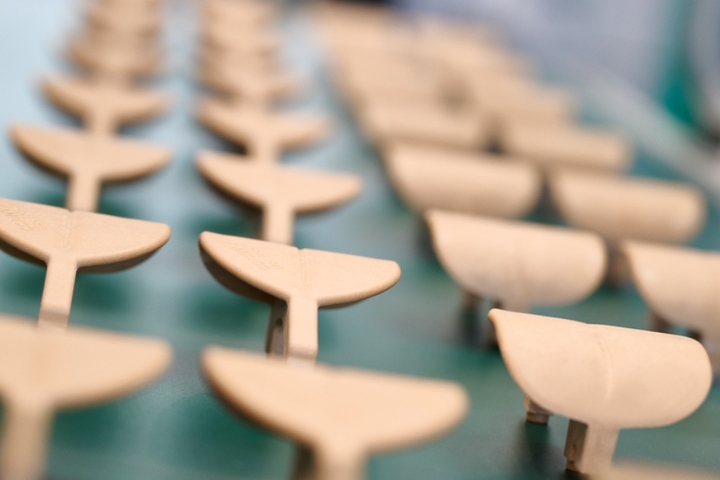ARBURG
Injection moulded from paper: machinery maker works on alternative to plastic granulate
— By Plasteurope.com staff —
Injection moulding machine manufacturer Arburg (Lossburg, Germany; www.arburg.com) has launched products that are made from “paper pearls” instead of conventional plastic granulate. The development partner, which also distributes the plastic paper beads, is Swiss cardboard packaging manufacturer Model (Weinfelden; www.modelgroup.com).
Injection moulding machine manufacturer Arburg (Lossburg, Germany; www.arburg.com) has launched products that are made from “paper pearls” instead of conventional plastic granulate. The development partner, which also distributes the plastic paper beads, is Swiss cardboard packaging manufacturer Model (Weinfelden; www.modelgroup.com).
 Injection-moulded parts with more than 50% paper fibre content (Photo: Arburg) |
At this year’s Fakuma, where the process was presented for the first time, the German company demonstrated an application with a paper fibre content of just over 50%. “The goal is a product that can be recycled in the paper cycle. We are talking about a fibre content of 95%,” a company spokesperson told Plasteurope.com. Bio-based, biodegradable, and petroleum-based plastics can be used for the polymer content.
At the plastics trade fair, parts for furniture connectors were produced on an electric Allrounder 370 A with a two-cavity mould from Lercher (Klaus, Austria; www.lercher.at) in a cycle time of around 60 seconds. “There are currently partnerships for the further development of the material. Product examples include 3D puzzles, cream jars, pens, and make-up utensils,” the spokesperson said. However, due to the fibre content, the end products should have a minimum wall thickness of 3 mm.
Related: Arburg faces threat of job cuts
“The higher the fibre content, the more demanding the process becomes,” said Arburg. Longer holding pressure times are currently required, which means that the cycle time is still around 20% slower. However, this is set to change significantly in the future thanks to adapted material formulations.
In terms of price, the aim is to be cheaper than conventional plastics. However, the material processed at the trade fair was even more expensive due to the small production volume, the spokesperson said, without quantifying the exact difference.
18.11.2024 Plasteurope.com [256509-0]
Published on 18.11.2024

 German version of this article...
German version of this article...